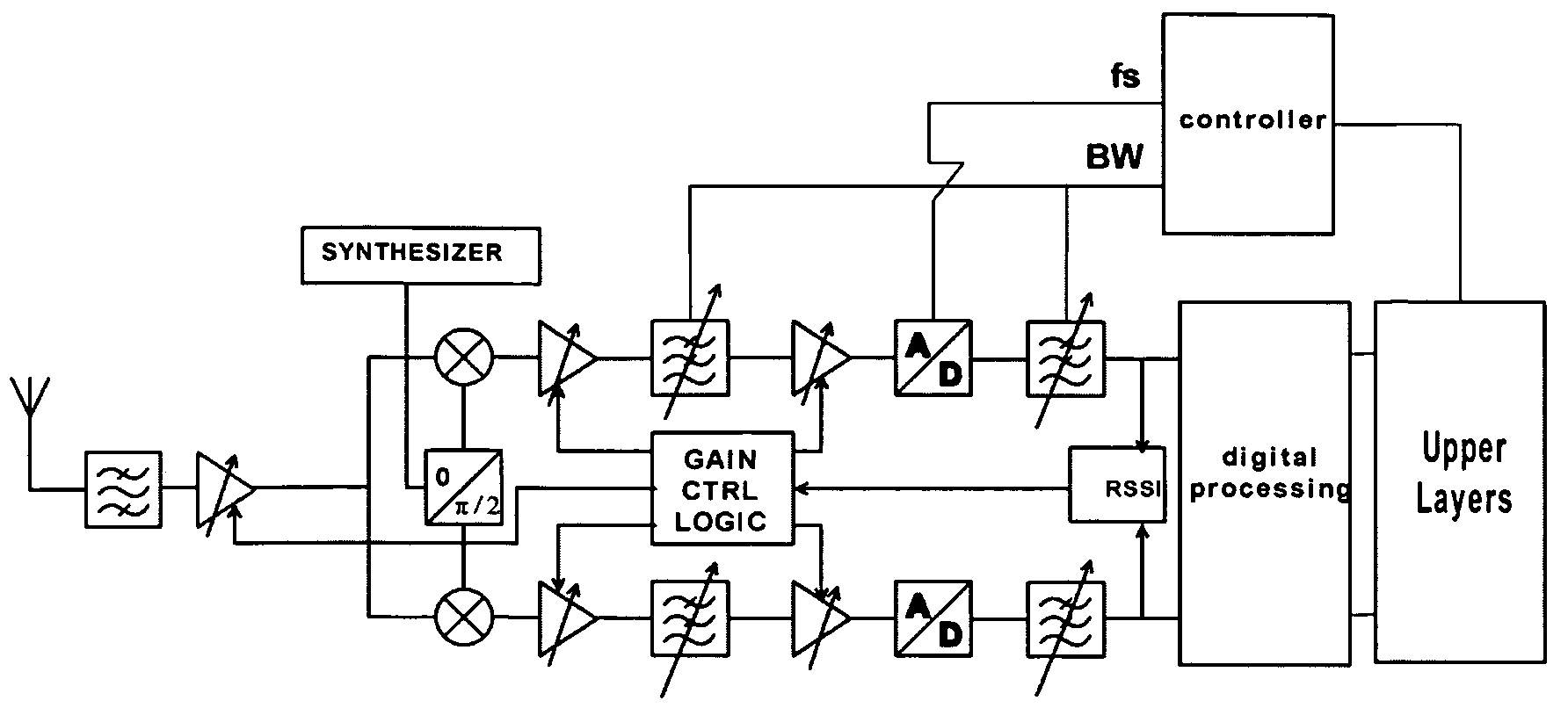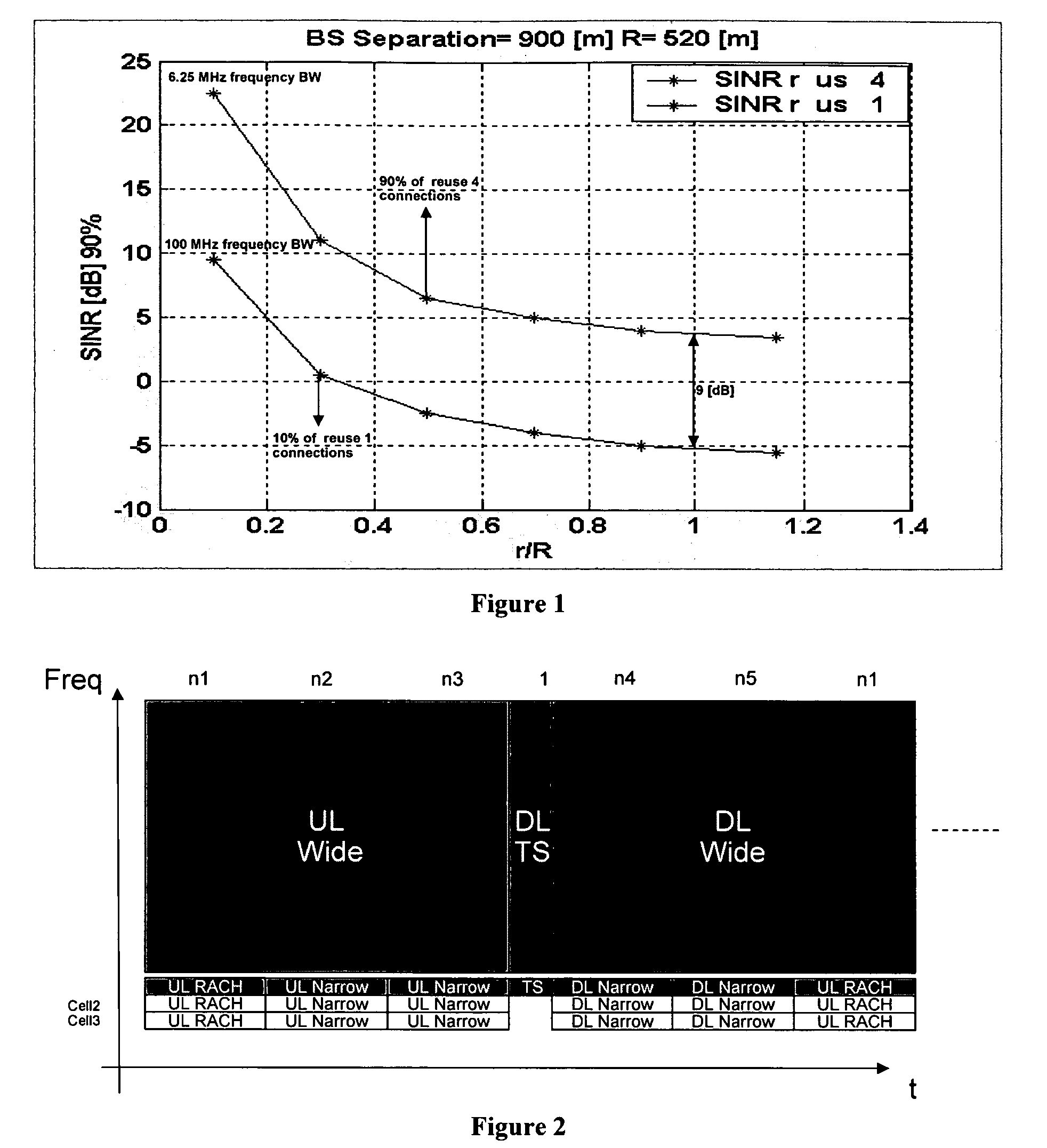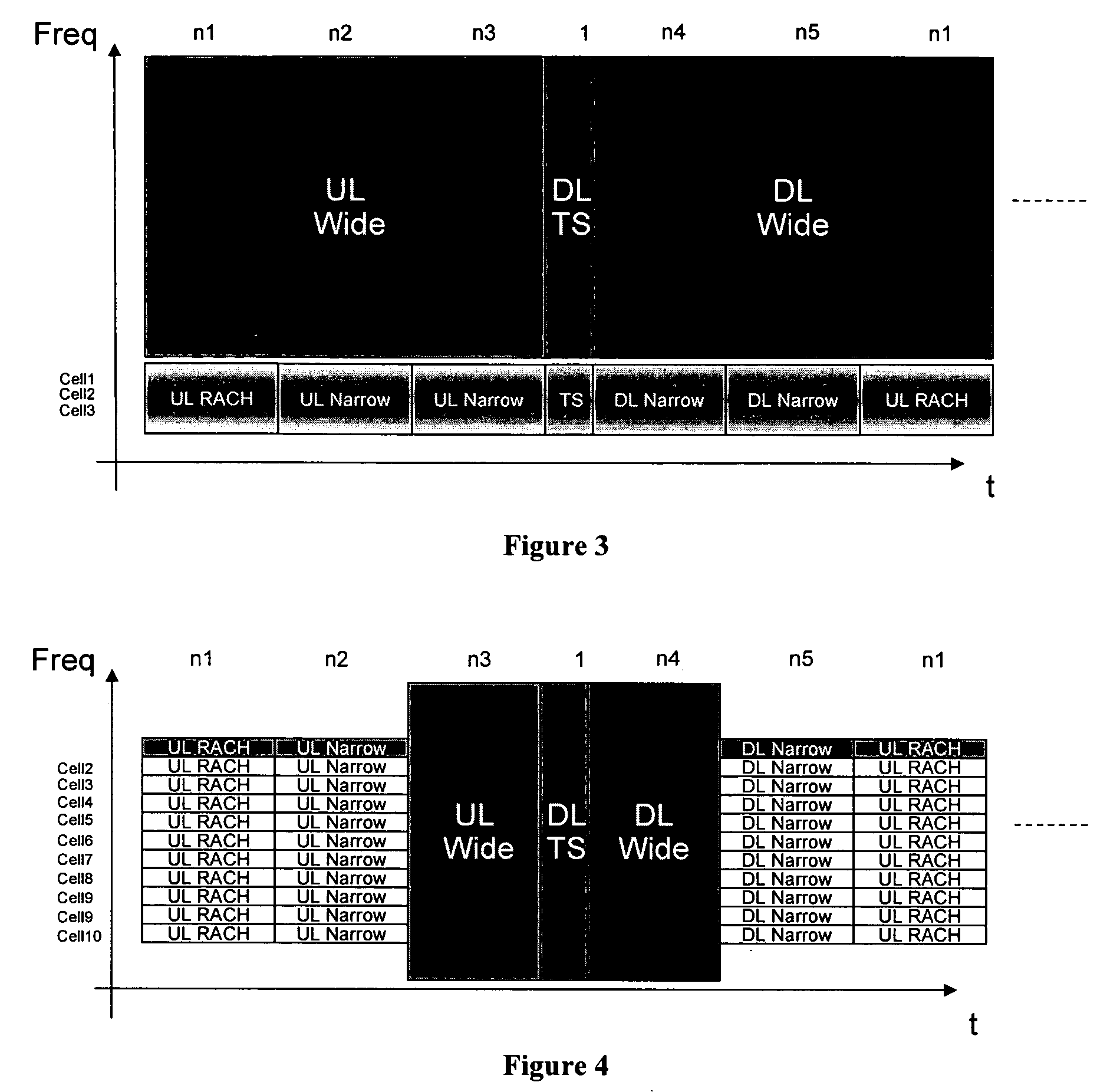Variable bandwidth in a communication system
a communication system and variable bandwidth technology, applied in the field of high data rate wireless transmission systems and methods, can solve the problems of limited spectrum availability, high spectral efficiency needed for these capacities, and limited spectrum availability, so as to and increase the re-use of frequency channels
- Summary
- Abstract
- Description
- Claims
- Application Information
AI Technical Summary
Benefits of technology
Problems solved by technology
Method used
Image
Examples
Embodiment Construction
[0020] Assuming a carrier bandwidth of 100 MHz, a full-rate communication channel can be split into more narrow channels for various reasons. Narrower channels can be used for better range, smaller block size for more efficient transmission of smaller packets, lower terminal power consumption, lower terminal price by supporting only the more narrow bandwidth channels, and lower re-use. As an example, splitting a full-rate channel of 100 MHz by four would yield 4*25 MHz channels, and another split would produce 16*6.25 MHz channels. For comparison, WCDMA (Wideband CDMA) uses 5 MHz per carrier. Higher re-use can be provided using the 6.25 MHz channels by several different implementations. Example implementations are described below with reference to FIGS. 2-4.
[0021]FIG. 2 illustrates the use of split channels outside a full-bandwidth channel of 100 MHz. In such an implementation, a terminal that has good channel conditions uses the 100 MHz channel. When the terminal approaches a cell...
PUM
 Login to View More
Login to View More Abstract
Description
Claims
Application Information
 Login to View More
Login to View More - R&D
- Intellectual Property
- Life Sciences
- Materials
- Tech Scout
- Unparalleled Data Quality
- Higher Quality Content
- 60% Fewer Hallucinations
Browse by: Latest US Patents, China's latest patents, Technical Efficacy Thesaurus, Application Domain, Technology Topic, Popular Technical Reports.
© 2025 PatSnap. All rights reserved.Legal|Privacy policy|Modern Slavery Act Transparency Statement|Sitemap|About US| Contact US: help@patsnap.com



